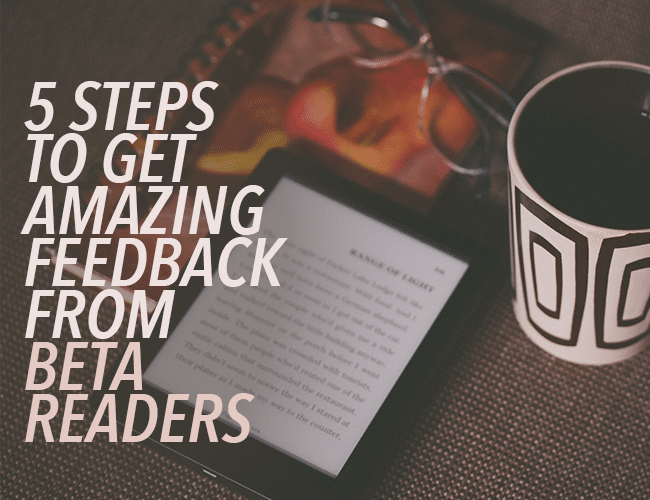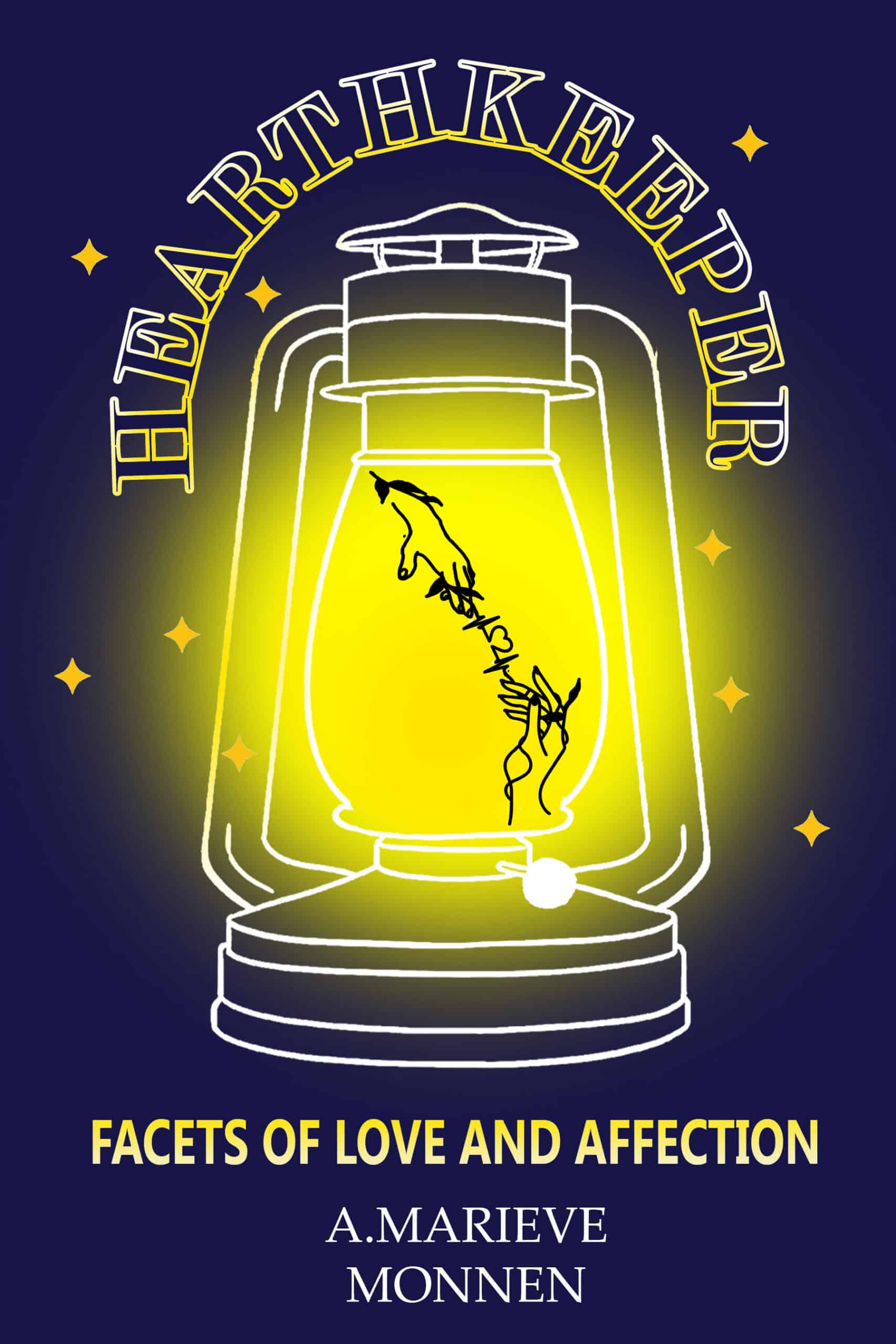When you’ve finished a book, you feel like a hero. The work may have some warts, but it’s yours, and it’s done! The next step is to test it out on some beta readers and see how well the book works. This is called Beta Testing (or just “beta-ing”) your book.

Reader feedback can teach you a lot, but it can also be hard to filter the signal from the noise. The key is learning how to process that feedback so you can make productive edits. Today I’ll teach you how I learned to do this.
5 Steps to Beta Your Book
I first tried this process on a novel I cranked out for NaNoWriMo last year. I was amazed by how much I learned, but also a bit exhausted by the effort. Being also a programmer, I started building a web app, called BetaBooks, to help automate my next two Betas. This turned out to be really helpful, so I opened it up to other authors.
Since this summer, fellow authors have beta’d more than a hundred books this way, and I’ve incorporated a lot of what they’ve taught me in this post as well.
Don’t worry, though, you can use this five-step process with any tools, even just a pen and paper.
1. Pre-Work
Before you send it out, your manuscript should be clean and proofread at least once. The goal of a beta is to get a realistic reader reaction, and messy formatting and typos will take the reader out of the flow.
You should give your beta readers specific guidance on how to leave feedback. To keep readers in the flow, ask them just to answer a few short questions at the end of each chapter. Keep your questions short and specific as much as you can. For example:
- What did you like most about this chapter?
- Was there anything you found confusing or hard to believe?
- What are you curious about?
- Did the ending hook you and make you want to read the next chapter?
This structure makes it easier for beta readers to give feedback, and easier for you to compare reader reactions.
As far as actually sending out your text, there are a lot of options, but I recommend against sending editable files or using inline commenting. People don’t stop to highlight typos or leave margin notes when they’re reading “normal” books. ePub files are nice because they’ll display on almost any mobile device. You can also post privately online, for example using BetaBooks or a private WordPress site.
Collecting feedback online is nice because then it’s all in one place. If you go with email, don’t leave feedback sitting in your inbox. Instead file it someplace permanent as it comes in so you know where to find it all later.
2. Collect and Categorize Feedback
As you collect feedback, I recommend grouping it by reader and chapter, and sorting it into a few categories:
- Ignore: off-target feedback, or stuff you disagree with.
- Keep: positive feedback about things the reader loved.
- Consider: feedback you’re not sure about.
- Todo: suggestions you agree with and want to incorporate.
Yes, you should ignore some feedback. Sometimes one reader won’t “get” a joke, or like a scene. If nobody else feels that way and your gut says it works, ignore that comment.
And if someone said they loved a certain moment or scene, don’t forget that! Keeping the stuff that works is just as important as fixing the stuff that doesn’t.
3. Process Your Feedback
Once you’ve got all your feedback collected and categorized, it’s time to decide what to do about it. Here’s how I do it:
1. Take the feedback you marked “ignore” and do just that, put it off to the side and forget about it.
2. Take the feedback you marked “keep” and put it off to the side, but keep it handy. You’ll come back to it later.
3. Take the feedback you marked “consider,” think about it, then change it to “ignore,” “keep”, or “todo.” If you can’t decide, then ignore. You’ll have plenty of work to do anyway.
4. Now you’ve got a big stack of “todos.” Read through them and notice where you see patterns. When you see a common thread, pick out those todos and line them up like a timeline from the beginning to the end of the book.
5. Look through your “keep” feedback, and if any of it relates to the thread you’ve created, insert it into the thread. Remember, you don’t want to kill the parts people love!
6. Now you have several editorial threads. Each one will naturally focus on a major idea like “the protagonist needs to be more active” or “remove that subplot.” Give each thread a label so you can keep track of it.
7. Lastly, rank these feedback threads from most compelling to least compelling. Whichever thread you think would make the biggest positive impact on your book should be first.
4. Editing Pass(es)
Now the fun part! You’ve got your feedback organized in threads, and hopefully have some great ideas for how to improve the book. Start with the thread you ranked highest, and work your way through the todos. I like to put the feedback in chronological order, work through the book from front to back, and mark each one “done” as I address it.
When you finish a thread you’ve made a substantial edit to the book, and hopefully made it a lot better. Congratulations!
You can make multiple passes this way, addressing less important threads on each pass. However, each editing pass makes old feedback less relevant, and after two or three passes it’s usually time to set the rest aside. That’s why you want to rank the threads and tackle the most impactful one first.
5. Rinse and Repeat—but not Forever
After I’ve finished a new draft I love getting another round of beta feedback. When I see a lot more positive comments, I know I’ve made progress.
There is a point of diminishing returns, though. I recommend not doing more than two beta rounds back to back. After that, if you don’t feel your book is working, it’s probably best to let it sit for a while. Go write the next book, then come back later with fresh eyes and less emotional attachment.
Give Beta-ing a Try
Running a beta is hard work, but with a good process in place you can extract a ton of value from it. This isn’t the only way to do your beta, but it’s a great framework and I’d encourage you to give it a shot. I hope you’ll find new insights into your story, and great inspiration for your next draft!
Have you ever shared your writing with beta readers? What was helpful or challenging about the experience? Let us know in the comments.
PRACTICE
For today's practice, you have two choices. If you’ve got notes lying around from a previous beta, try categorizing them as described above, then organizing them into threads. Do you see any new patterns, or recognize anything new? Comment below to share what you saw.
If you're not in the beta process right now, take fifteen minutes to practice editing a piece you've already written. Maybe it's a chapter of your work-in-progress, or a short story you've written and set aside, or a practice you've shared on a previous article. Pull it out, give it a re-read, and look for ways to polish it.
When you're done, share your practice in the comments, and be sure to leave feedback for your fellow writers!
One last note: if you're looking for beta readers, this community is a great place to find them. Share your search in the comments, and look for other writers whose books you can beta, too!
This article is by a guest blogger. Would you like to write for The Write Practice? Check out our guest post guidelines.



I just finished having my book edited by two different editors. One encouraged a deeper edit, so I searched for a contest editor. When they finished, I went back to the first one to tidy up the writing. However, I also had my beta readers read my new and improved version after the content editor had their say. I have to concur that you have to really use your own judgement on which corrections to make. At first, I just changed everything the editor said. Then, when I would re-read, I would think my voice had gotten lost or an important point that had inspired the whole story had been eliminated. I had to go back and un-do some of the edits that I had accepted. It has been a learning process. For one, I need to learn to trust myself. I like your idea of categorizing feedback from beta readers because that will help me streamline my edits with their feedback. Thank you!
Thanks, Wanda!
Learning to triage feedback was a life-saver for me. Before I started doing that I would feel like I needed to somehow “accept” every suggestion, or in some way “deal” with every comment people made. Over time I realized that’s just silly.
The best thing is when you can get multiple opinions and respond to the stuff where you see a consistent theme (i.e. everyone is confused by one scene) and pay much less attention to the one-off stuff (only one person disliked a character, etc.)
Triaging really helps keep that stuff organized so you can see the patterns at the end of the process.
Thanks Andrew, love your beta reading platform.
Thanks!
Thanks for the insight into how you process your beta feedback, Andrew. I did something similar using a spreadsheet, listing all the suggestions people made (and some of my own), then grouping and prioritizing them and adding a date when I’d applied them. The spreadsheet was clever enough to fade out the completed ones, leaving the remaining to-dos staring at me. I’m now about to subject my book to a beta cycle on Betabooks and am eagerly looking forward to the next round of feedback.
Thanks, Vince! 🙂
Thanks, Andrew; great advice!
Thanks, Gary 🙂
This is solid information on getting beta feedback. It can be difficult to work through feedback in a way that is deliberate and systematic, and your thoughts approach a useful, usable way to do just that. Well said!
Great post and solid advice. I especially appreciate the tips on categorizing feedback. It’s essential. Some things are essential to your book regardless to what others think but if everyone hates the same thing you probably ought to pay attention.
Writing is hard work. Running a Beta read is even harder work. it’s also the first time your book is tested in a real-world scenario and it is critical to your books ultimate success. Better to change things now, BEFORE a raft of single-star reviews send you spiraling into depression. 🙂
I actually discovered BetaBooks by accident through a fellow author. I’m one of his beta readers and he used the system to beta read his latest book. I loved it so much I’m now using it to beta my latest book.
I quite agree with the tips on categorizing feedback. And this is a great post on beta readers which I was not aware of earlier.
I will try this and will use it for my progress. thank you.
As an author and a member of the “Beta Pool”, I have learned so much for my own writing. This works and gives you clarity and inspiration for your work. Thanks Andrew and Paul. I look forward to the next Beta Book!
Kathy Knuckles,Author,Beta Reader, ARC Reader, Polisher.
Great article! Super helpful to have solid advice on the art of beta reading and sorting what to do with feedback 🙂
I’m in the middle of my second pass of beta reads for my first novel, and yes, I am using Beta Books. I was fortunate enough to be chosen as the Beta read of the month on Andrew’s site and the volume of feedback is incredible.
Andrew’s process is very similar to my own. I heartily agree that you have to categorise the feedback. Doing so is not only good for your own sanity, but helps you develop discernment as a writer. I felt that it was only once I began to say no to some suggestions, that realised I was developing my own voice.
I completely concur with the “second pass” rule for beta readers. It made reading Carleton’s book interesting to read again to see the changes and opportunities related to the feedback he received and what he used or discarded in the second pass. It is also great for beta readers like myself to know what feedback is used or discarded to improve feedback process. I think after second beta reader pass onto an editor!
You’ll also get a wide range of opinions fro beta readers, some of whom have real life editing experience and others who just opine as readers. Both are valuable but can also be taken with a grain of salt as writing is so personal. Thanks Andrew for the article!
How do you go about getting beta readers?
OK. I really appreciated this article from a novelist/software engineer; succinct, organized, concrete. I can’t say I’m a beta read veteran (one novel, two beta reads), but between Scribophile, Novel and Short Story Writer’s Market, and this post, I’d say this one is literally (and literarily) packed with useful ideas. This will definitely enhance my routine for the thirteen novels I have in mind.
Thank you for this article. I need all of the feedback that I can get…
Thanks for all the advice in this post! I’ll be sending out my MS to betas in the near future, and these are some excellent tips for me to keep in my back pocket.
I was the second of 7 children and at a very early age, around 10, my parents seemed to trust me with so many things. They seemed to value my opinion. To have that kind of validation by your parents as a child was a huge feather in my cap.
Please join bestseller writers group http://facebook.com/bestsellergirl
I’m about 10 pages away from finishing the first draft of my second novel. I didn’t get beta readers for the first (although I did get a professional edit), but will definitely consider betas for this one as I’m going to self-publish. This is a great, interesting article and I’m going to give BetaBooks a good look. Thank you!
I have two different critique groups, where several writers give feedback to each other. This has been invaluable, but it has one drawback: they critique only one chapter at a time. Either a chapter a week or one a month. They are not giving an overall read and critique.
How do you find a beta reader for the entire manuscript?